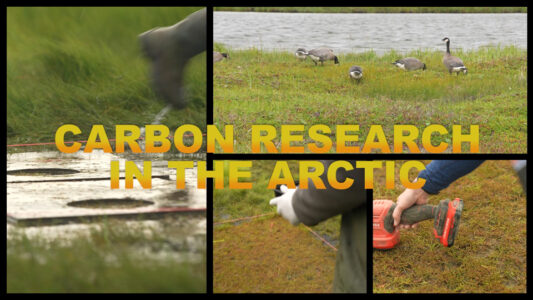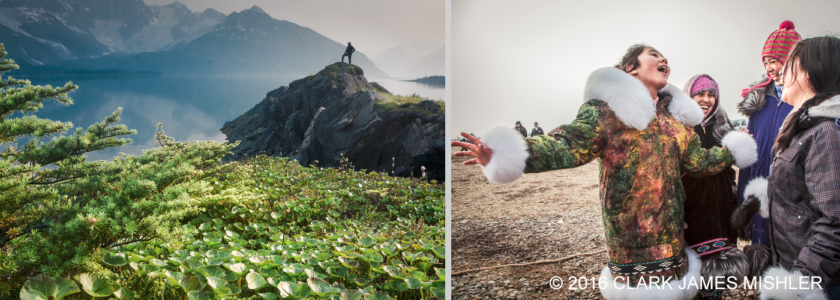By Carin Ashjian for The Arctic Winter Cruise 2011
We spent yesterday sheltered in the ice, at a place called “refuge”. We moved here two nights ago to enjoy the calm afforded by the sea ice as the latest Bering Sea storm raged over us. Today the weather has moderated and we sampled across a line of stations that extended towards the Yukon River Delta. The goal was to see the impact of the freshwater from the river on the biological and physical properties of the adjacent ocean. The salinity became fresher as we moved east, as should occur with an influx of fresh water. The water became increasingly turbid and the sea ice very dirty with embedded sediment. Our plankton nets started to bring up dirt, in addition to phytoplankton and then, at the station closest to the river delta, what looked like material of terrigenous origin, coming from land plants. At the last station, I abandoned the use of the Video Plankton Recorder since it cannot see very well through suspended sediment.
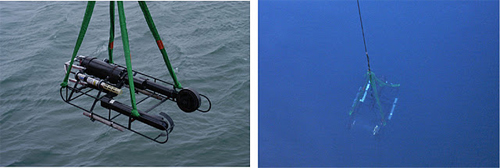
The Video Plankton Recorder is an underwater microscope that uses a camera and strobe to take photographs of plankton “in-situ”, in their natural habitat. Depth is also recorded so that we can calculate the concentration of each plankton type with depth in the water. The light from the VPR is a cool blue as it flashes, descending down into the inscrutable sea to yield photos of remarkable clarity and detail. Rather than seeing the plankton lying in a dish under the microscope, one can see them as they swim in the water. A fascinating glimpse into the underwater world of the plankton.
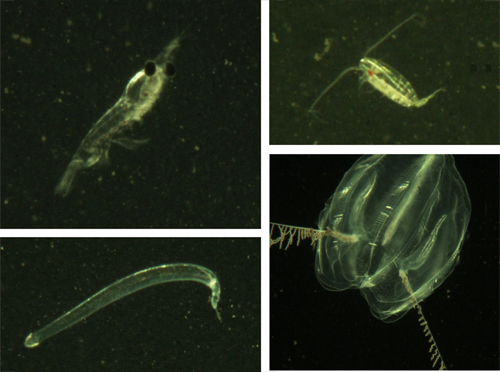
All is not work here on Healy. Last night was Saturday night, the big night “out” so to speak. As a Saturday night morale event, there was a “rave” in the helicopter hanger complete with blue lights, light sticks, and “smoke”. The place was transformed from a utilitarian barn to a misty world of blue light, flashing glow sticks and throbbing music. It was quite a shock to the sensations but refreshing. After a few hours, the smoke was cleared, the normal lights restored, and a semblance of order re-established.
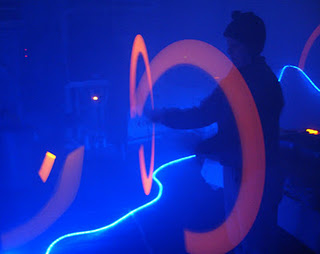
We are moving south now, heading towards Nunivak Island and the locations where we had planned to sample three days ago but were foiled by the storm. There is another big storm on the horizon, threatening with 50 knot winds on Tuesday. We are hoping to sneak in a few more stations before this monster catches up with us. For now, the ride is gentle, with a few bumps as Healy pushes aside the soft sea ice. Time is running out, we return to Dutch Harbor on Dec. 17. But the weather is what it is.
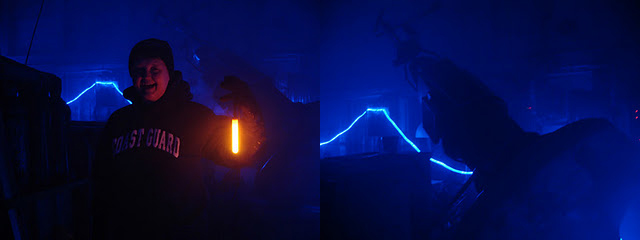
By Carin Ashjian for The Arctic Winter Cruise 2011, WHOIExpeditions http://arctic-winter-cruise.blogspot.com/2011/12/blue-lights.html Monday December 12th, 2011
Read the Cruise Overview.
Go to the article list on the FS project page.
See WHOI’s audio slideshow highlighting the cruise.
